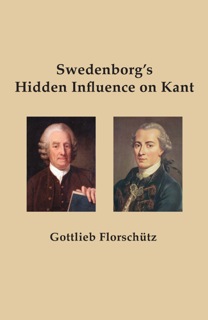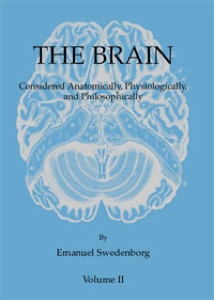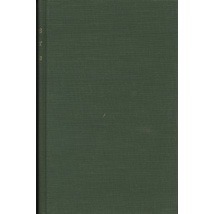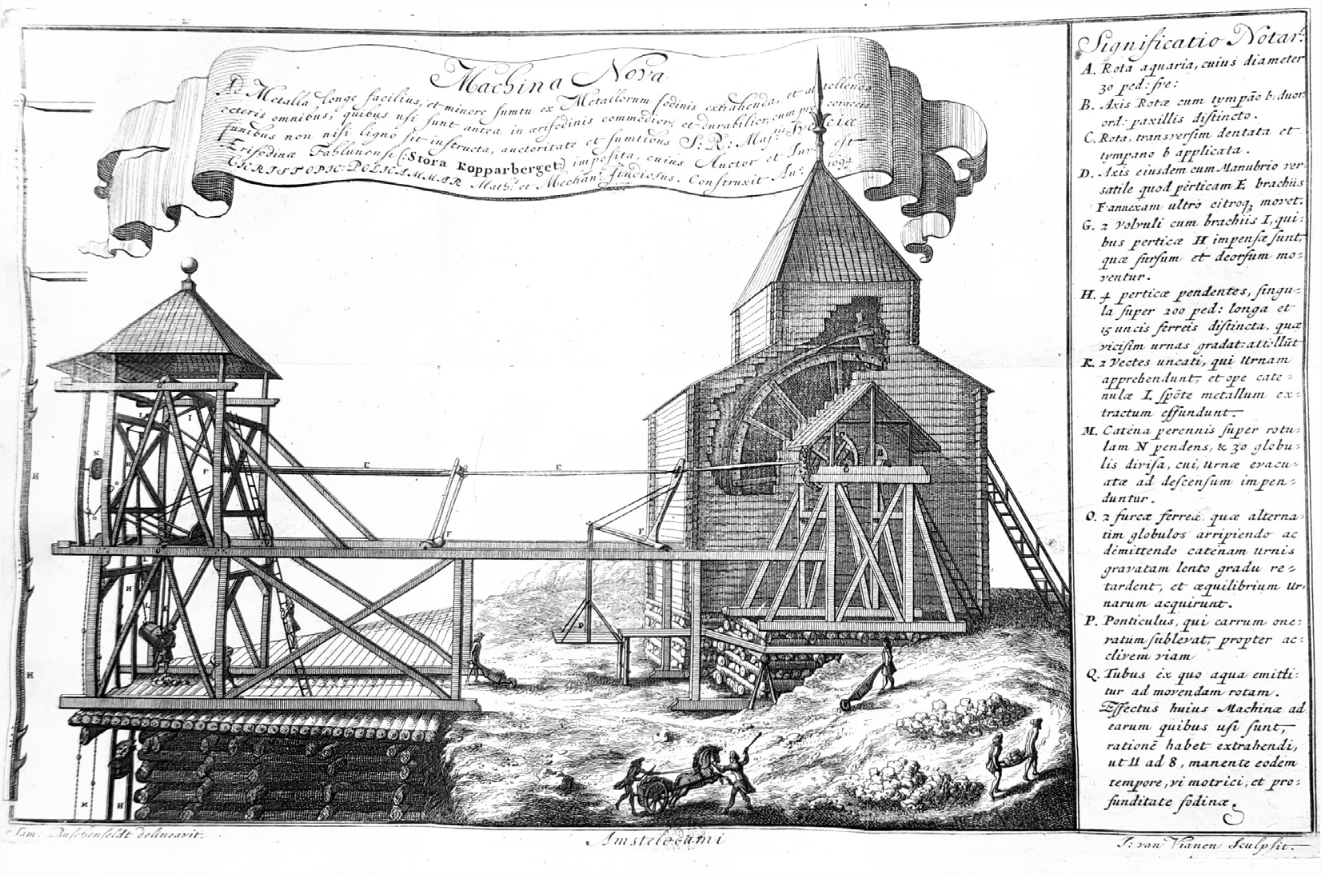| Cover | Title | Author | Purchase | NOTES |
|---|---|---|---|---|
 | Daedalus Hyperboreus: The Nordic Inventor, Emanuel Swedenborg’s Scientific Journal | Staffan Rodhe | Buy at Amazon.com | Daedalus Hyperboreus [“The Nordic Daedalus”] is the first ever scientific journal in Sweden and one of the first in Europe. Swedenborg himself wrote the majority of the 38 articles. Sometimes he has used Polhem’s notes and letters, and at times has carefully studied Polhem’s machines in action. In many of the articles he also describes his own inventions and experiments. They deal with such things as the construction of a flying machine, ship-building, methods to establish the longitude at sea or to find the proportion between the volume of geometrical bodies. |
 | On Common Salt that is on Mined or Crystal, Sea, or Spring Salt | Swedenborg, Emanuel | Buy at Amazon.com | Many of Swedenborg’s works have yet to be translated into English. These are considered his “minor works,” and as such, often escape the interest of translators and scholars alike. But we ignore these small works at our peril. One of these is De sale communi, hoc est de sale fossili vel gemmeo marino et fontano (On common salt, that is, rock or glittering salt, sea salt and spring salt.) An edited Latin manuscript of this work entitled De Sale Communi by Alfred Acton was published by the Swedenborg Scientific Association in 1910, and this English translation by Michael V. David and Consultant and Editor J. Durban Odhner in the 1980s was published serially in The New Philosophy, 86:150–165; 87:397–411; 88:542–554, 595–606; 90:256–280; 91: 650–653, 698–701; 92: 47–49, 94–97; 94: 599–637; 95: 133–151. |
 | Osteopathy and Swedenborg: The Influence of Emanuel Swedenborg on the Genesis and Development of Osteopathy, Specifically on Andrew Taylor Still and William Garner Sutherland | Fuller, David B. | Buy at Amazon.com | The ideas of Emanuel Swedenborg have had a significant influence on the creation and development of osteopathy, particularly on Andrew T. Still and William G. Sutherland. Still first developed osteopathy in 1874, then founded the American School of Osteopathy in 1892, an entirely new medical profession. |
 | Intelligent Default: Swedenborg’s Theistic Science and the Problem of Organic Form | Bell, Reuben P. | Buy at Amazon.com | Emanuel Swedenborg came of age with the rise of modern science and the waning of religious orthodoxy. As a theistic scientist he was at odds with the naturalism of his colleagues, and as a mystical theologian he was equally at odds with orthodox Christianity. Yet his accomplishments in science and spirituality did much to improve the lot of both: his scientific discoveries are capable of informing twenty-first-century physics and biology, and the spiritual principles he discovered are sufficiently comprehensive to support a model inclusive of both. His method is as useful today as it was in his time. To support this claim, Intelligent Default applies Swedenborg’s science, spirituality, and method to a present-day problem in the natural sciences: the evolution of organic forms. Using Swedenborg’s doctrines of influx, degrees, forms, correspondence, and others, which combine to produce a comprehensive model of spiritual causation, new light is shed on this perennial problem: natural forms are not “designed,” nor do they appear by accident. Every organic form is a “default setting,” as it were, established according to parameters inherent in matter, in response to environmental conditions, but dependent on reciprocal, functional interaction with a spiritual cause as well. These parameters are analogically reflective of the divine human form, manifesting itself in continual creation. A comprehensive treatment of Swedenborg’s doctrines of forms and correspondence reveals these principles to be complementary structural and functional mechanisms of spiritual-natural influx, respectively. Change of form is by discrete degrees of order, and spiritual-natural interaction is by corresponding function. What results is matter, receptive of and responsive to divine influx, participating in the human form, to the limits of its organizational parameters. These parameters, seen from our natural perspective as the physical constraints of natural laws, are this divine human form accommodated to and at work in the natural world, apart from, and yet interactive with it. Evolution of new forms and adaptation of existing forms to changing conditions occur in the crucible of the “randomness” of nature into which, at its inmost level, flows the template of the human form divine. |
 | Swedenborg's Hidden Influence on Kant | FlorschÌtz, Gottlieb | Buy at Amazon.com | In a book that will interest Swedenborgians and Kantians-but also those who are concerned with Schopenhauer and metaphysics generally-Gottlieb FlorschÌtz has given us a careful tracing of the Sage of Kinigsberg's changing attitude toward the famous Seer of the North. |
 | A Philosopher's Notebook | Swedenborg, Emanuel | Buy at Amazon.com | The most complete collection available of Swedenborg's known letters and memoranda, chronologically arranged and fully annotated. Acton's translations retain "so far as possible, the style and flavor of the originals." Considerable commentary connects the letters and memoranda with Swedenborg's travels and manifold activities. |
 | Dynamics of The Soul's Domain | Swedenborg, Emanuel | Buy at Amazon.com | It is a study of human physiology and psychology, with focus in Vol. I on the blood and cardiac system, with consideration of gestation. Vol. II begins with a chapter titled "An Introduction to Rational Psychology" wherein Swedenborg enunciates his important doctrine of Series and Degrees. Vol. II focuses on the brain and the human soul. Author & Subject indexes in Vol. II. |
 | Ontology, or the Signification of Philosophical Terms | Swedenborg, Emanuel | Buy at Amazon.com | In this little work translated by Alfred Acton from the 1742 Latin manuscript, Swedenborg defines various philosophical terms through citations from Dupleix, Baron, and Wolff, followed by his own commentary. |
 | The Principia (2 Volumes) or The First Principles of Natural Things, being New Attempts toward a Philosophical Explanation of the Elementary World | Swedenborg, Emanuel | Buy at Amazon.com | It opens with an essay on the author's philosophical method which involves the employment of the trilogy of "experience, geometry and the power of reason." The work is about the creation of the elementary world and includes the original enunciation of the nebular hypothesis. |
 | Psychologica | Swedenborg, Emanuel | Buy at Amazon.com | Drawn from Swedenborg's Codex 88, one of his journals in which he took notes on various works by other authors. These notes are interspersed with entries recording his travels in 1733 and 1734. The portion of Codex 88 extracted here comprises the extensive notes taken on Psychologia Empirica of Christian Wolff (1679-1754) accompanied with substantial commentary by Swedenborg. |
 | Psychological Transactions and Other Posthumous Tracts, 1734-1744 | Swedenborg, Emanuel | Buy at Amazon.com | Includes six important manuscripts on the relation between soul and body, written about 1742. Also includes Swedenborg's creative and important Hieroglyphic Key (1744); it was in this short work that Swedenborg began to systematically outline the doctrine of correspondences. This volume also includes short treatises on "Faith in Christ," "The Way to a Knowledge of the Soul," and "Faith and Good Works." |
 | Rational Psychology: A posthumous work written in 1742 | Swedenborg, Emanuel | Buy at Amazon.com | Detailed examination of the human mind from the innermost soul down to its most earthly and sense-based elements. Considers the nature of emotions and passions as well as different kinds and levels of ideas, and the process of thinking. Concludes with discussion of the effect on the mind of bodily death, with speculations as to which mental elements perish at death and which survive. |
 | Swedenborg's Journal of Dreams: 1743-1744 | Swedenborg, Emanuel | Buy at Amazon.com | This current edition of Swedenborgs Journal of Dreams is a revision of one published in 1977 by the Swedenborg Foundation, and was jointly published by the Swedenborg Scientific Association and the Swedenborg Society. Dr. William Ross Woofenden has made it easier for the reader to identify Swedenborg's many references to the people, places and events of his day by adding footnotes containing most of the reference material that was in a 1918 English edition, translated and edited by C Th. Odhner. |
 | The Brain: Considered Anatomically, Physiologically and Philosophically | Swedenborg, Emanuel | Buy at Amazon.com | The Brain follows The Cerebrum in dealing in considerable detail with the animation, or inherent motion of the cerebrum, and the predictable motion of its membranes and the cranial bones secondary to it. But this work extends the description of this phenomenon to the cerebellum and spinal cord as well. |
 | The Cerebrum | Swedenborg, Emanuel | Buy at Amazon.com | Called the "Venice Manuscript" by scholars of Swedenborg's science, this work of 1738, which Swedenborg left unpublished, is a seminal study in many ways. His first of two major works on the brain,* this book serves to illustrate the power of induction, or reasoning from specifics to general scientific principles, at which Swedenborg excelled. It is here that he describes the animation, or intrinsic motion of the brain, and the predictable motion of its membranes and the cranial bones secondary to it. |
 | The Fibre, Volume 3 of Dynamics of the Soul's Domain | Swedenborg, Emanuel | Buy at Amazon.com | Called the "Venice Manuscript" by scholars of Swedenborg's science, this work of 1738, which Swedenborg left unpublished, is a seminal study in many ways. His first of two major works on the brain,* this book serves to illustrate the power of induction, or reasoning from specifics to general scientific principles, at which Swedenborg excelled. It is here that he describes the animation, or intrinsic motion of the brain, and the predictable motion of its membranes and the cranial bones secondary to it. |
 | The Five Senses: Being the First Draft of a Treatise Intended as Part of the Animal Kingdom Series, and Parts of Which Were Elaborated | Swedenborg, Emanuel | Buy at Amazon.com | The original work, completed in 1744, was a first draft of a contemplated work, not a finished treatise. Internal evidence places it in The Animal Kingdom series of which it can be considered Part III-Parts I & II being published in the two vols. |
 | The Infinite the Final Cause of Creation | Swedenborg, Emanuel | Buy at Amazon.com | First published in 1734, this work examines the Infinite and its relation to the finite. It also explores the nature of the interaction of the soul and body. An important work in Swedenborg's philosophical development, looking back to Principia and forward to the later physiological and psychological works. |
 | The Organs of Generation, Volume IV of The Soul's Domain | Swedenborg, Emanuel | Buy at Amazon.com | This work, part of Swedenborg's Soul's Domain (formerly Animal Kingdom) series, continues the examination of the operation of the soul in the body, but from the perspective of its descent into the organs of generation. |
 | The Soul's Domain (The Animal Kingdom, considered Anatomically, Physically, and Physiologically) | Swedenborg, Emanuel | Buy at Amazon.com | The Soul's Domain (also known as The Animal Kingdom) is the second and last of Swedenborg's published physiological works. It follows in the same vein (pardon the wordplay) as its predecessor The Economy of the Animal Kingdom, Swedenborg again extracting from the leading anatomical authorities and reaching his own conclusions from the evidence gathered. |
 | Letters and Memorials of Emanuel Swedenborg, 1709-1772 | Swedenborg, Emanuel | Buy at Amazon.com | The most complete collection available of Swedenborg's known letters and memoranda, chronologically arranged and fully annotated. Acton's translations retain "so far as possible, the style and flavor of the originals." Considerable commentary connects the letters and memoranda with Swedenborg's travels and manifold activities. |
 | On Tremulation | Swedenborg, Emanuel | Buy at Amazon.com | Fragments of a remarkable theory about "our most subtle nature, showing that our moving and living force consists of vibrations." This prelude to Swedenborg's search for the soul is his first examination of the relation between physiology and mental consciousness. He conceives of human sensations as consisting of subtle vibrations or "tremulations." |
 | Principles of Chemistry, with Other Treatises | Swedenborg, Emanuel | Buy at NewChurchBooks.com | In 1721, Swedenborg published (among other things) three treatises: Prodromus principorum rerum naturalium . . . (Forerunner of first principles of natural things, or new attempts to explain chemistry and experimental physics geometrically); one titled Iron and Fire; and one titled Finding the Longitude of Places. These were translated by Strutt, and published together in 1847. |
 | Miscellaneous Observations Connected with the Physical Sciences | Swedenborg, Emanuel | Buy at NewChurchBooks.com | A series of commentaries by Swedenborg on miscellaneous natural phenomena, particularly concerning geology, mineralogy, chemistry, physics. Includes Swedenborg's memoir of King Charles XII's development of a "new Sexagenary Calculus" (number system based on 64). |
 | MENTICS, A Mind Modeling Method | Odhner, Rachel D. and Odhner, Oliver R. | Buy at Amazon.com | New mind modeling method opens a fresh perspective on psychology. It's called "mentics". |
 | Harold F. Pitcairn: Aviator, Inventor, and Developer of the Autogiro | Gunther, Carl R. | Buy at Amazon.com | In today's aviation parlance, Harold F. Pitcairn had The Right Stuff. He was, at once, a patriot, an aviation pioneer, a business man, a designer, an inventor, a dreamer, and a forecaster of the future. He was a giant of a man in the development and growth of heavier-than-air aviation in The United States. |
 | Physiological Correspondences | Worcester, John | Buy at Amazon.com | This is a reproduction of a book published before 1923. This book may have occasional imperfections such as missing or blurred pages, poor pictures, errant marks, etc. that were either part of the original artifact, or were introduced by the scanning process. We believe this work is culturally important, and despite the imperfections, have elected to bring it back into print as part of our continuing commitment to the preservation of printed works worldwide. |
 | Reflection | de Charms, George | Buy at Amazon.com | In the opening chapter we read: "'There are more arcana in the doctrine of reflection than in any other whatever.' This arresting statement is found in number 733 of [Swedenborg's] Spiritual Experiences. It seems to challenge the generally accepted view . . . However, when we analyze the teaching of the Writings on the subject, we learn that it has universal application because it underlies all the other operations of the human mind . . . All consciousness depends upon it . . . Without it the Lord could not have effected the Glorification of His Human . . ." |
 | Religion and Science: From Swedenborg to Chaotic Dynamics | Baker, Gregory L. | Buy at Amazon.com | Conventional wisdom suggests that science and religion are unrelated and often in conflict. Yet, both areas contribute to the totality of human knowledge. In Religion and Science Gregory L. Baker examines this relationship from both his own experience as a physicist and his religious faith-based upon the theological writings of Emanuel Swedenborg, the eighteenth century scientist, philosopher, and theologian. |
 | Swedenborg and His Influence | Brock, Erland J. (Editor) | Buy at Amazon.com | The year 1988 is the three-hundredth anniversary of the birth of Emanuel Swedenborg, scientist, philosopher, and theologian. While he was a man of scientific temperament and insight, it is the record of his spiritual journey that has had a subtle and pervasive influence on so many individuals who have helped shape our culture. This collection of 24 articles represents original research on Swedenborg and his influence. |
 | Swedenborg Researchers Manual: A Research Reference Manual for Writers of Academic Dissertations and for Other Scholars | Woofenden, William Ross | Buy at Amazon.com | The work consists of five parts: SwedenborgÛªs complete lifetime literary output, a selection of collateral literature, glossary of special or technical terms, selected list of key concepts in Swedenborg, and major documentary collections worldwide. |
 | The Human Mind | Odhner, Hugo L. | Buy at Amazon.com | Serious study of Swedenborg's psychology by a leading twentieth century authority on Swedenborg. In a series of essays Odhner clearly and concisely examines a wide variety of topics concerning the human mental constitution, including its state after death. Particularly helpful in explaining Swedenborg's conception of the relation between the physical and spiritual realms. |
 | The Listening Threads: The Formal Cosmology of Emanuel Swedenborg | Newton, Norman | Buy at Amazon.com | A major New Church collateral work that puts Swedenborg's Principia into its proper context of Age of Reason scholarship. There have been commentaries on the Principia in the past, but none so authoritative as this. Newton uncovers Swedenborg's method, and finds his religion and science equally at work in forging radical, prescient perspectives on the major problems of the day. |
 | The Natural Basis of Spiritual Reality | Berridge, Norman J. | Currently unavailable Second printing in 2015. | The body of man is the natural object corresponding most closely to heaven and having the greatest relevance to the truly human form. Hence it is that human anatomy and physiology facilitate our understanding of the doctrine of the Grand Man. How delightful it is to think about the beauty and wonder of the bodily structure and function and at the same time to realize that it is the product of the Lord's love and wisdom descended by degrees through heavens... |
 | Words for the New Church (IV, V, VI, Science and Philosophy) | Lippincott, J. B. | Buy at Amazon.com | Words for the New Church - Science and Philosophy by the Academy of the New Church This 3-part series, first published in 1878, has been reprinted 1976 in a single volume. |
| Cover | Title | Author | Purchase | NOTES |

